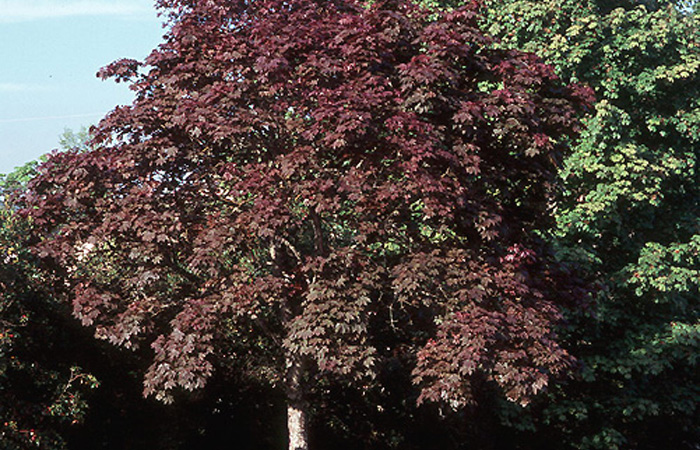Now, where did we leave off last? Ah yes, plants to be cautious about. Let’s pick up out topic again with a very special maple. This is a tree that has trouble with cracking on the trunk, and it is the Purple Leaf Norway Maples. I have seen very few survive in Manitoba and when they do it is with heavy damages. That being said there is not a good replacement for it in our area at this time. Some Flowering Crab Apples and Chokecherries will have purple leaves but they only grow to half the size.
Fruit bearing Apple trees need careful thought as well. There are many different varieties all with their own great features. A few to look out for are the Winter Cheeks Apple and the Honey Crisp Apple. Both of these are very tasty and enjoyable to eat but difficult to keep alive through our winters. Some older varieties like Norland and Norkent do quite well in the cold but are more prone to diseases like Fireblight.
Speaking of disease that brings me to a long time classic that has rapidly been disappearing from our landscape and stores. The Tower Poplar, a cross breed of Swedish Aspen and Silver Poplar. It grows with an extremely upright and tight form giving it a rocket like appearance. Cold hardy and fast growing it has been a popular choice for privacy rows and shelter belts. But Bronze Leaf Disease (BLD) came in and changed everything. The disease begins to show with the summer heat and the affected foliage will begin to turn a reflective copper colour. With time the branches stop growing leaves at all, and die becoming brittle. The Disease attacks anything related to Swedish Aspen. It is incurable and is airborne. The fact that there were so many Tower poplars planted in South East Manitoba enable the disease to spread quickly and easily. The best way to treat it to prolong the life of your trees is to cut out any affected branches before it can spread. Using copper spray as a preventative measure can help to keep the disease away but it is not a cure and spraying an entire row of mature trees simply isn’t an option for most people. Our alternative tree: Sundancer Poplar. It is from a totally different family of Poplar and is unaffected by the disease. I grows to the sand height and spread but the branches are more horizontal rather than upright. Like the tower Poplar it is a male selection and does not produce any fluff or seed. As an improved feature the Sundancer does not produce any sucker shoots that will be popping up in your lawn. The tower Poplar was notorious for that.
The last tree I want to warn you about is the Mountain Ash. The trouble with Mountain Ash is not its cold tolerance. While it can struggle with Fireblight at times this is also not the main problem. The trouble with mountain Ash is under ground. It needs a very well drain location or else it can drown quickly gas suddenly. This is a problem when most of our soil in the red river valley is clay and is exceptionally effective at retaining moisture. A mountain Ash can grow happily and beautifully for 5 years strait if the rain has humidity are in its favour. All it takes is one wet summer it can drop dead. This also applies to elder shrubs. Fast growing and cold tolerant enough, but easy to drown. If however you live in an area with sandy soil and good drainage like Marchand or the Sandylands you might have no trouble at all growing mountain Ash, elders and even wild blueberries! Low Bush Blue Berries can handle our winters just fine but they need a high acid sandy soil and most of our yards are just the opposite.
I hope you find this information insightful. You will probably see all of these classics in garden centres this spring, and now you know to avoid the mistake.




